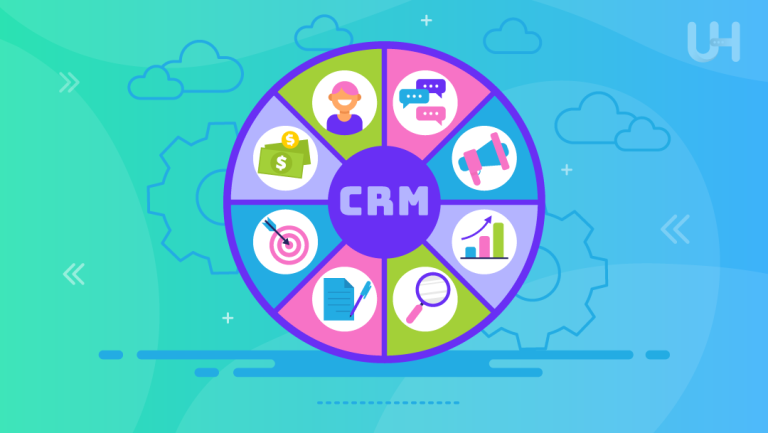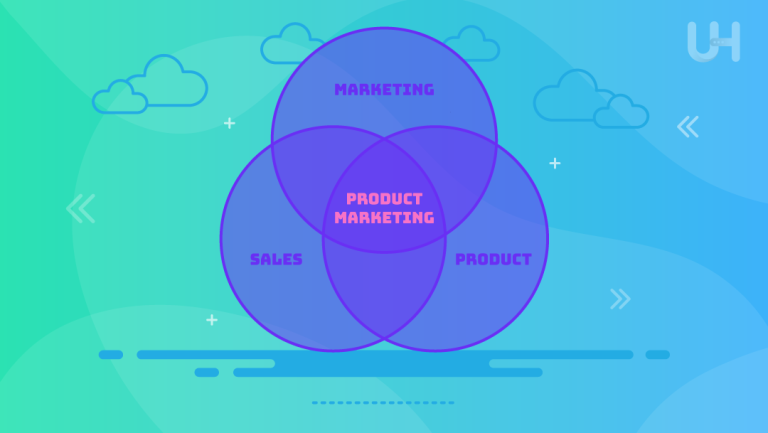An eCommerce site needs a blog to enhance brand authority, drive traffic, and engage customers effectively, ultimately leading to increased sales and customer loyalty. The eCommerce industry has experienced remarkable growth in recent years. With more consumers shopping online, businesses face increasing competition. To stand out, brands must adopt effective strategies that capture their target audience’s attention.
Blog is the absolute necessity to be successful in eCommerce. Blog can be used for the creation of valuable content, the engagement of customers, and the increase of visibility within search engines. In this blog, we will discuss the reasons of why ecommerce needs blog and highlighting how it can drive traffic and foster customer loyalty.
Understanding the Role of Blogging in eCommerce
Blogging plays a vital role in eCommerce by enhancing brand visibility and engagement. It serves as a platform for sharing valuable content that attracts and retains customers. Blogging primarily started as a medium for expressing personal thoughts and experiences that were elaborated in their subject content. Most classic blogs had long form content for detailed study on a particular subject.
Defining an eCommerce Blog
An eCommerce blog is an exclusive section on the website of an online store. Articles in this section provide relevant information related to the products or services being offered. Such articles can be of many types, such as how-to guides, product reviews, industry trends, and stories of customers. The purpose of an eCommerce blog is to attract visitors and increase traffic to the site. Companies can also build brand awareness in the feeds of their followers to nurture leads.
Integrating Blogs into the eCommerce Strategy
Blogs are an essential element of the overall eCommerce strategy. They enhance local search engine optimization because they always bring new content that will attract search engines. This subsequently enhances the ranking of the website on the result pages of search engines. Blogs allow brands to showcase their expertise and engage with customers at a more personal level. Businesses can develop trust and loyal customers through the dissemination of informative and entertaining content.
Common Misconceptions About Blogging for eCommerce
Many people feel that blogging is only suitable for brands selling digital products or services. This is, however, far from the truth. All eCommerce businesses can use a blog irrespective of what they sell. The second myth is that blogs have to be constantly updated to work. Although regular posting is ideal, even infrequent high-quality content can be quite impactful. Finally, some feel that it is too much time taken. Blogging, like everything else, can be manageable if planned with a content calendar.
Why eCommerce Needs a Blog
A blog is essential for eCommerce as it enhances SEO and increases organic traffic to the site. Additionally, it fosters customer engagement and builds brand authority, leading to increased trust and sales.
SEO Benefits
Blogging is one of the significant ways of enhancing SEO. Fresh, relevant content attracts search engines as well as users. If blogs are updated regularly, it sends a signal to the search engines that the website is active and relevant and therefore increases its ranking in search results. For effective content optimization, use SEO writing tips for content optimization that can boost your blog’s visibility and attract more traffic. Fresh content will also encourage visitors to come back and increase overall site traffic. Blogs also allow for strategic use of long-tail keywords. These targeted keywords attract focused audiences searching for particular products or information. In such circumstances, the possibility of converting is high.
Ready to Take Your eCommerce Site to The Next Level?
Start a blog to drive traffic, build brand authority, and engage your audience like never before. Visit Ultahost’s Blog Hosting for reliable hosting solutions designed to power your content strategy. Transform your eCommerce business with a blog today!
A blog is a big factor in establishing authority in an industry because it makes explicit the expertise and knowledge behind a brand. Consistent display of valuable insights, solutions, and industry trends means that brands can be branded as thought leaders. One way that HubSpot uses its blog is by sharing the best marketing strategies and some advice for professionals looking for more guidance in the field. Another is by issuing articles by Shopify that enable entrepreneurs to be successful at eCommerce hence establishing them as authoritative. Such visibility enhances the confidence of customers towards the site, which sets it apart from the competitors wherein the site becomes one of the primary sources concerning the products sold within it and products for general knowledge as well.
Customer Engagement
Blogs foster customer interaction through posting comments and social shares from the readers. Good articles enable the readers to contribute or respond to the discussions by generating further questions and thoughts to communicate towards the brand. Sample kinds of engaging blog article features include tutorials that empower their customers to apply things accordingly and detailed product reviews offering unblurred feedback and insights on related features, often backed by customer profile surveys to ensure the content aligns with real user preferences and needs. For example, a hardware store has available project instructions that drive customers to test new practices while also revealing the hardware and materials they can purchase. All these help in increasing customer loyalty by making them spend more by having a stake in seeing the brand do well.
Enhancing Customer Trust
Informative content builds trust with prospects through the value proposition offered to the brand. Continuous useful and factual information given on a blog shows that a brand cares about helping audiences make an informed decision, which can be strengthened further by being transparent in the sharing of expertise and experience. Authenticity is given by the brands that share their process, customer testimonies, or case studies about the products. In this respect, a brand of skincare may share ingredient sourcing details and product testing to provide customers with peace of mind regarding the quality and safety of the product.
Adapting to Consumer Behavior
Consumers now seek information and educative content before buying, while consumer behavior and preferences on content consumption change. The blog responds to this by providing informative articles, guides, and resources that would meet customer needs. Most consumers increasingly seek detailed online research before purchasing. Through this adjustment to the change in trends, brands can win the attention of their potential customers and keep it stuck to them. For instance, a store for technological devices can blog on the inventions of the latest technologies and continue to inform the clients regarding the latest technologies. That will be marketing your product as well.
Differentiating Your Brand
A blog helps your brand stand out from the crowd in unique views and perspectives relevant to your audience. Sharing these stories, values, and visions makes brands connectable and tangible to consumers; as seen above, a brand about sustainable fashion might put a blog on ethical sourcing, the environmental impact related to sourcing, and reasons for implementing sustainable practices toward nature-friendly customers. Brands can find an identity in unique angles to blogging such as stories from the founders or even detailed explorations of the materials. This is very crucial in a marketplace where there is too much crowding, and consumers are looking for more and more brands to fit their values and beliefs.
Benefits of eCommerce Blog
An eCommerce website blog drives traffic to your site by improving SEO and providing shareable content. It also enhances customer engagement, builds community, and increases conversion rates through quality content and cross-promotion of products. It even gives room to post updates regularly, thereby ensuring the committed community remains updated and engaged.
Driving Traffic to Your Site
Blogs can significantly increase traffic to your eCommerce site through organic search. By creating keyword-rich and relevant content, blogs improve your website’s visibility on search engines. When users search for information related to your products, high-quality blog posts can appear in search results, driving targeted traffic to your site. Additionally, blogs provide shareable content for social media platforms. Engaging blog posts encourage readers to share links on their social media profiles, expanding your reach and attracting new visitors. As social media evolved with micro-influencers and nano-influencers, users began to drift to places where they could easily share short messages with an impact, hooking them into real-time engagement and connectivity.
Improving Conversion Rates
Quality blog content can effectively guide customers through the sales funnel. By addressing common questions and providing valuable information, blogs help potential customers make informed decisions. For instance, a blog post that explains the benefits of a product can encourage readers to purchase it. Moreover, blogs can reduce bounce rates and increase session durations by keeping visitors on the site longer. Engaging and informative content encourages users to explore additional pages, leading to higher chances of conversion.
Creating a Community
A blog can foster a loyal community around a brand by encouraging interaction and engagement. When readers feel connected to the content, they are more likely to return and engage with the brand. The importance of comments and feedback cannot be overstated, as they create a dialogue between the brand and its audience. By responding to comments and incorporating feedback into future content, brands can strengthen relationships with their customers, creating a sense of belonging and community.
Cross-Promotion of Products
Blogs offer an excellent platform for highlighting products and promotions. Content types such as gift guides, style tips, and seasonal collections can effectively promote products while providing value to readers. For example, a fashion retailer might publish a blog post featuring holiday outfit ideas that showcase various items available in their store. This approach not only promotes products but also inspires customers to make purchases by providing practical advice.
Leveraging User-Generated Content
Incorporating customer stories and reviews into blog posts can significantly enhance credibility. When potential customers see real-life experiences from satisfied buyers, it builds trust and encourages them to make a purchase. Strategies for encouraging user generated content include creating campaigns that invite customers to share their experiences or testimonials. Brands can also feature user-generated content in blog posts, showcasing how customers use their products in everyday life.
Increased Email Subscriptions
A blog can drive email sign-ups through the use of lead magnets, such as downloadable guides, exclusive content, or newsletters. By offering valuable resources in exchange for email addresses, brands can grow their subscriber list. Nurturing leads through email marketing is crucial for maintaining engagement. Regular newsletters featuring blog content, promotions, and personalized recommendations help keep the audience informed and interested in the brand, ultimately leading to higher conversion rates.
Types of Blog Content That Work Well for eCommerce
Effective blog content for eCommerce includes how-to guides, product reviews, and industry news that engage and inform customers. Additionally, customer stories, seasonal content, and FAQs enhance credibility and drive traffic, fostering a loyal community around the brand.
How to Guides and Tutorials
How-to guides and tutorials provide significant value by offering instructional content for customers. These posts empower readers to understand how to use products effectively and solve specific problems. For example, a cosmetics brand might create a tutorial on achieving a particular makeup look using their products, helping customers visualize the results. Successful how-to blog posts often include step-by-step instructions, visuals, and tips to enhance the learning experience. These guides not only engage customers but also position the brand as a helpful resource.
Product Reviews and Comparisons
Product reviews and comparisons are essential for helping customers make informed decisions. These posts provide detailed insights into the features and benefits of various products, allowing consumers to weigh their options. Authenticity is crucial in reviews; customers appreciate honest feedback and real-life experiences. For instance, a tech retailer could write comparison posts between similar gadgets, highlighting the pros and cons. By offering genuine assessments, brands build trust with their audience, increasing the likelihood of conversions.
Industry News and Trends
Keeping customers updated on industry news and trends positions the brand as a thought leader. By sharing insights into market developments or emerging technologies, brands can establish credibility and authority. For example, a fashion brand might discuss upcoming trends for the season, helping customers stay informed about what’s in style. Additionally, inviting guest posts from industry experts can enrich the content and provide diverse perspectives. This strategy not only engages readers but also expands the brand’s network within the industry.
Customer Stories and Case Studies
Sharing customer stories and case studies enhances credibility by showcasing real-life experiences. These posts illustrate how products have positively impacted customers’ lives, making the brand more relatable. For example, a fitness brand might feature a customer’s journey to health and wellness, highlighting the role of their products. Effective customer story content often includes testimonials, before-and-after images, and personal anecdotes, fostering emotional connections with readers. This authenticity can encourage potential customers to trust the brand and make a purchase.
Seasonal and Trend-Based Content
Timely blog posts that align with seasons or holidays are crucial for maintaining relevance. Seasonal content allows brands to connect with customers during key shopping periods, such as holidays or back-to-school seasons. For example, a home decor retailer could publish a blog post on holiday decorating tips, featuring their products. Additionally, creating relevant content based on current trends keeps the blog fresh and engaging. This approach not only attracts new visitors but also encourages repeat traffic as customers return for seasonal insights.

Behind-the-Scenes Content
Sharing behind-the-scenes stories humanizes the brand and builds a stronger connection with customers. This content can showcase team members, production processes, or company culture, providing transparency and authenticity. For example, a small-batch food company might share the story of how their products are made, highlighting their commitment to quality. By giving readers a glimpse into the brand’s operations, companies can foster loyalty and create a community of engaged customers.
FAQs and Problem-Solving Posts
Addressing common customer questions through FAQs and problem-solving posts is vital for enhancing the customer experience. These posts provide clear, concise answers to inquiries that customers frequently have, reducing confusion and frustration. For example, an eCommerce site selling electronics might create an FAQ post detailing troubleshooting steps for common issues. By clarifying customer doubts and providing helpful solutions, brands can improve customer satisfaction and encourage repeat business.
Best Practices for Creating an eCommerce Blog
Best practices for creating an eCommerce blog include developing a content calendar, optimizing for SEO, promoting posts through social media and email, integrating visual storytelling, measuring performance with analytics, and conducting A/B testing for continuous improvement.
Content Planning and Strategy
Content is king, it is essential for organizing and scheduling blog posts, as it helps ensure that content is consistently published and aligns with marketing goals. Moreover, by planning, brands can easily identify seasonal topics, promotions, and relevant trends to cover in their blogs. Additionally, consistent posting builds an engaged audience and improves SEO, since search engines favor websites that regularly update their content.
SEO Optimization Techniques
Optimizing blog posts for SEO is crucial for driving organic traffic. Use relevant keywords strategically throughout the content, including in titles, headings, and meta descriptions. This practice helps search engines understand the topic and relevance of the post. Additionally, consider using internal linking to direct readers to product pages or related content on your site. This not only enhances the user experience but also helps improve the overall SEO performance of the website.
Start Building Your eCommerce Blog Today!
Boost your eCommerce success by adding a blog that drives traffic, builds trust, and keeps your customers engaged. Get started with powerful, optimized hosting at Ultahost’s eCommerce Hosting and give your blog the support it needs to shine.
Promoting Blog Content
Sharing blog posts on social media and through email newsletters is vital for reaching a broader audience. Use various platforms to promote content, including Facebook, Instagram, Twitter, and LinkedIn, to maximize visibility. Engaging with readers through comments and social media interactions fosters a sense of community and encourages further discussion. By responding to comments and questions, brands can build stronger relationships with their audience.
Visual Content Integration
Incorporating images, infographics, and videos into blog posts enhances engagement and understanding. Visual content breaks up the text and makes posts more appealing, keeping readers interested. Infographics can simplify complex information, while videos provide dynamic content that can capture attention. For example, a fashion retailer might use videos to demonstrate how to style a product, creating a more interactive experience for the audience.
Measuring Blog Success
Using analytics tools to track blog performance is essential for understanding what works and what doesn’t. Key metrics to monitor include traffic, engagement rates, and conversion rates. Analyzing this data helps identify which topics resonate with your audience and which strategies drive the most traffic. Regularly reviewing these metrics allows brands to refine their content approach and make informed decisions about future posts.
A/B Testing for Content Optimization
A/B testing different content types and strategies is crucial for optimizing blog performance. This process involves creating two versions of a blog post or promotional email and measuring which one performs better. Tips for implementing A/B tests effectively include changing only one variable at a time, such as the title or call-to-action, to accurately gauge its impact. By continually testing and refining content based on audience preferences, brands can improve engagement and conversion rates over time.
Common Challenges and How to Overcome Them
Common challenges in eCommerce blogging include content creation, maintaining consistency, promoting effectively, and managing negative feedback, all of which can be addressed through strategic planning and proactive engagement.
Content Creation Challenges
Creating high-quality blog content can be challenging. Writers often struggle with generating fresh ideas and maintaining a consistent voice. To address this, brands can outsource content creation to freelance writers or agencies specializing in eCommerce. Additionally, using content tools and resources, like topic generators and content calendars, can streamline the creative process and ensure relevancy.
Consistency in Posting
Maintaining a consistent posting schedule is a common hurdle for many eCommerce blogs. Busy schedules can lead to lapses in posting frequency. To combat this, brands should set realistic content goals and create a content calendar in advance. Automating posts through scheduling tools, like Buffer or Hootsuite, can also help maintain consistency and ensure timely content delivery.
Promoting Blog Content Effectively
Promoting blog content effectively can be difficult due to the abundance of online information. Brands often struggle to stand out in crowded feeds. Developing a strategic marketing plan is essential, including targeted social media campaigns and engaging email newsletters. Utilizing eye-catching visuals and compelling headlines can capture attention and drive traffic.
Dealing with Negative Feedback
Handling negative feedback on blog posts is inevitable. While criticism can be disheartening, it also offers valuable insights. Brands should respond to negative comments professionally, acknowledging the feedback and thanking the commenter. This approach can turn a negative experience into a positive interaction and demonstrate a commitment to customer satisfaction and improvement.
Future Trends in eCommerce Blogging
Future trends in eCommerce blogging include the integration of emerging technologies like AI and automation, the rise of video content, and the necessity of voice search optimization to enhance user engagement and improve SEO.
Emerging Technologies
Emerging technologies like AI and automation are transforming eCommerce blogging, making content creation faster and more personalized.
AI in Content Creation
Emerging technologies, particularly artificial intelligence (AI), are revolutionizing content creation and blogging for eCommerce. AI-powered tools can streamline the writing process by generating topic ideas based on trending keywords and audience interests. These tools can also assist in drafting blog posts, suggesting headlines, and providing real-time SEO optimization recommendations. By leveraging AI, brands can produce high-quality content more efficiently and reduce the time spent on manual writing tasks. This allows marketers to focus on strategy and creativity rather than getting bogged down by the technicalities of writing.
Personalization with Chatbots
Another significant advancement in eCommerce blogging is the use of chatbots for enhanced user interaction. Chatbots can provide personalized responses to reader inquiries, creating a more engaging and interactive experience on the blog. For example, when a user visits an eCommerce blog, a chatbot can pop up to offer help with specific questions, suggest relevant articles, or even recommend products based on user preferences. This level of personalization not only improves user satisfaction but also increases the likelihood of conversions by guiding customers through their buying journey.
The Rise of Video Content
Video content is becoming a powerful tool in eCommerce, capturing consumer attention more effectively than traditional text.
Importance of Vlogging
Video content is rapidly gaining importance in eCommerce blogging, and with this shift, vlogging is emerging as a key trend. Not only do vlogs allow brands to showcase products, but they also enable them to share tutorials and tell their stories in a visually engaging format. Furthermore, with the rise of platforms like YouTube and TikTok, consumers are increasingly drawn to video content over traditional text-based articles. Consequently, this trend highlights the need for eCommerce brands to adapt their blogging strategies to include video as a primary medium for content delivery. In addition, vlogging offers an opportunity to create authentic connections with the audience, as viewers can see products in action and hear directly from the brand.
Integrating Video into Blog Strategy
To effectively integrate video content into a blogging strategy, brands should focus on creating diverse video formats. This can include product demonstrations, how-to guides, behind-the-scenes glimpses of the brand, and customer testimonials. For instance, a fashion retailer might create a vlog showcasing how to style their latest collection, allowing customers to visualize the products in real life. Additionally, embedding videos within blog posts can enhance storytelling and keep readers engaged longer, improving overall site metrics and SEO performance.
Voice Search Optimization
Let’s discuss the importance of voice search optimization in detail:
Impact on Blogging and SEO
Voice search is increasingly shaping blogging and SEO strategies, primarily due to the growing popularity of voice-activated devices like smart speakers and smartphones. As more consumers use voice commands to conduct searches, eCommerce brands need to optimize their content accordingly. Voice search typically involves longer, more conversational queries compared to traditional text searches. Therefore, bloggers must adapt their writing style to include natural language that aligns with how people speak rather than how they type.
Tips for Voice Search Optimization
To optimize blog content for voice search, brands should focus on a few key strategies. First, incorporating frequently asked questions (FAQs) into blog posts can help address common voice queries directly. This not only enhances the user experience but also positions the brand as a helpful resource. Additionally, using structured data and schema markup can improve search engine understanding of the content, making it easier for voice search algorithms to retrieve relevant information. By prioritizing conversational language and direct answers, brands can enhance their visibility in voice search results and cater to the growing audience of voice search users.
Conclusion
A well-integrated blog not only enhances SEO and drives traffic but also builds brand authority and fosters customer engagement. By sharing valuable content, eCommerce brands can connect with their audience and establish trust. We encourage readers to start integrating a blog into their eCommerce strategy to unlock these benefits. For those looking to delve deeper into the process, explore more resources or contact us for assistance in setting up a blog that aligns with your business goals. Your journey to enhanced online presence and customer connection begins with a compelling blog!
If you’re considering launching a blog for your eCommerce store, you’ll need the right tools. Start by securing the perfect domain name. Check out Ultahost’s Blog Domain options to find the perfect fit for your site. With the right domain and content strategy, you’ll be on your way to achieving eCommerce success.
FAQ
Why does an eCommerce site need a blog?
A blog drives traffic, boosts SEO, and builds customer trust, making it essential for eCommerce success.
What are the main benefits of having a blog for eCommerce?
Key benefits include improved search rankings, customer engagement, brand authority, and increased conversions.
How can a blog improve SEO for an eCommerce website?
Blogs help with SEO by providing fresh content, targeting keywords, and increasing backlinks to your site.
Can blogging increase sales on an eCommerce site?
Yes, a blog can guide customers through the sales funnel, ultimately boosting conversions and sales.
What types of content should an eCommerce blog include?
Useful content types are how-to guides, product reviews, customer stories, and industry trends.
How often should I post on an eCommerce blog?
Consistent posting, ideally once a week, keeps your blog active and improves search engine visibility.
Is a blog necessary for small eCommerce stores?
Absolutely! A blog can help small stores reach niche audiences, build brand loyalty, and grow organically.













